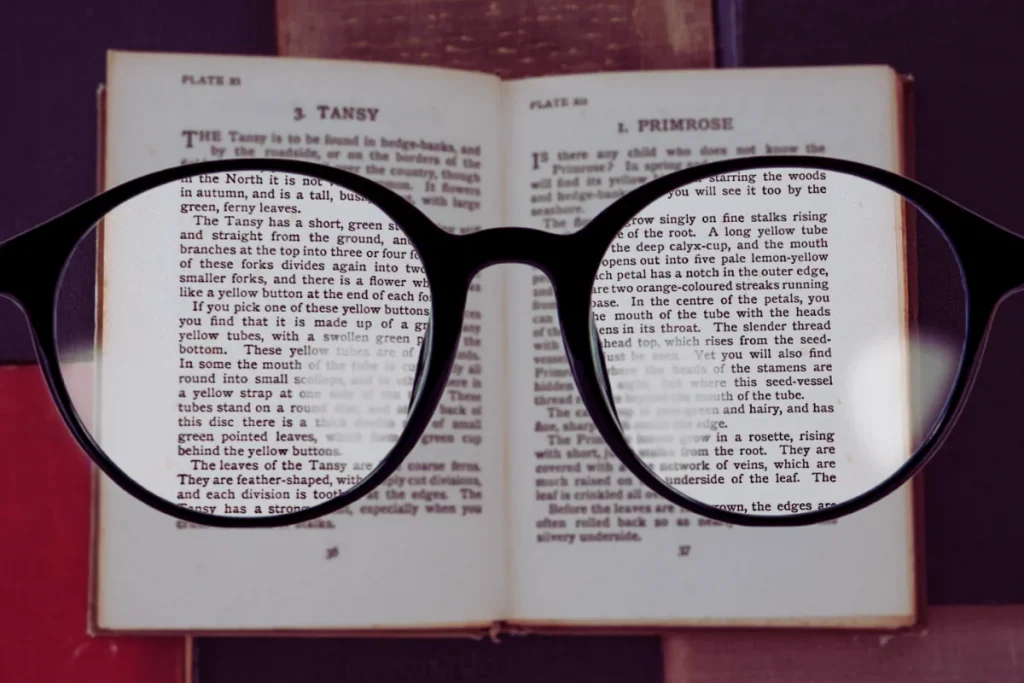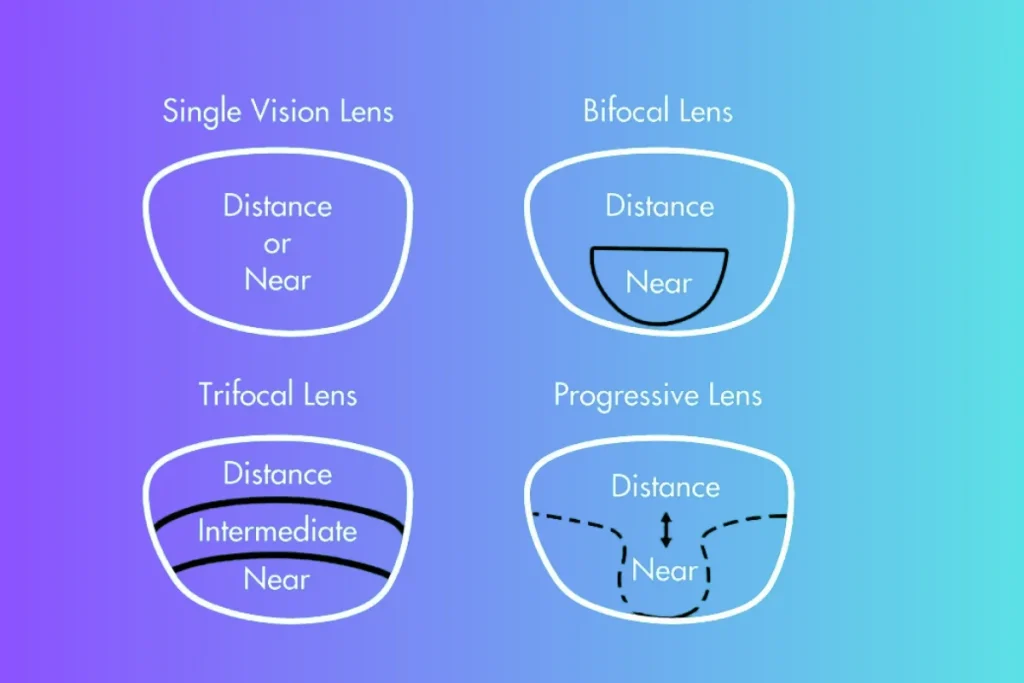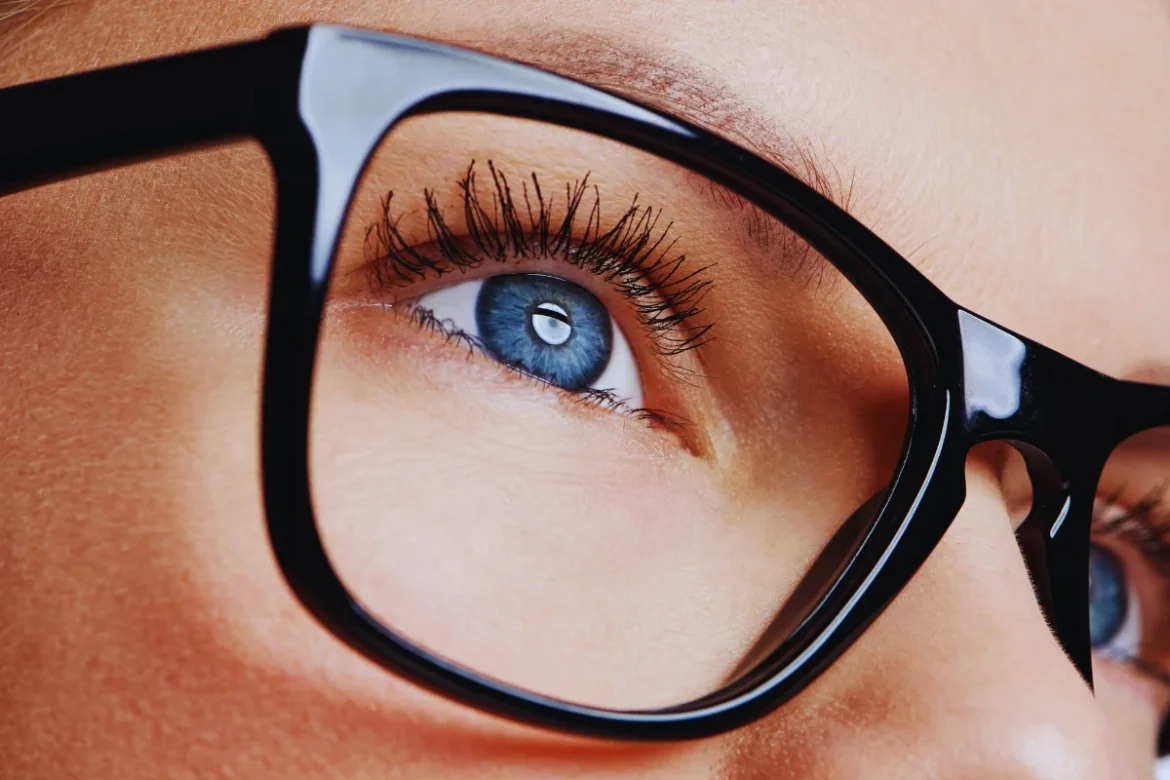As we age our eyes go through changes, especially when it comes to focusing on things up close. If you’re over 40 and having trouble reading small print or working on a computer, you’re not alone.
One modern solution to this is progressive lenses, a popular alternative to bifocals and reading glasses.
In this post we’ll go into what progressive lenses are, how they work, the benefits and how to adjust to them in daily life. Whether you’re getting your first pair or just want to understand the concept, this will help you make an informed decision.
Table of Contents
What Are Progressive Lenses?
Progressive lenses are a special type of lens that corrects for multiple distances, near, intermediate and far. Unlike bifocals or trifocals, they don’t have visible lines separating the different parts of the lens.
These are particularly useful for people who have trouble reading.
Instead of switching between multiple pairs of glasses for different activities, progressive lenses combine all corrections into one lens.
In short, think of progressive lenses as your daily life multi-tasker.
You can read a book, use your phone, work on your computer and see objects at a distance with the same pair of glasses. This convenience makes them a popular choice for people who want clarity and a natural looking lens design without the split found in older style bifocals.
Progressive lenses are made with advanced technology that blends the prescriptions across the lens surface. This creates a continuous visual field that supports natural eye movement from top to bottom. So you can move between tasks smoothly and comfortably without any jumps in vision.
How Do Progressive Lenses Work?

Three Vision Zones in One Lens
Progressive lenses work by incorporating a gradual shift in prescription strength from the top to the bottom of the lens:
- Top section – designed for distance vision (like driving or watching TV)
- Middle section – helps with intermediate vision (such as looking at a computer screen)
- Bottom section – supports near vision (ideal for reading or texting)
There are no sharp lines or sudden changes in the lens. The different strengths are blended smoothly, so your eyes can easily adjust as you look up, down, or side to side.
Who Should Consider Progressive Lenses?
Progressive lenses are a great choice for people who are starting to have trouble seeing things up close, especially after the age of 40. This happens because of a natural change in the eyes called presbyopia, which makes it harder to focus on nearby objects like books or phone screens.

You might find progressive lenses helpful if:
- You often switch between reading glasses and regular glasses
- Your vision seems blurry at both near and far distances
- You’re looking for a more modern, line-free lens that looks just like regular glasses
Even if you’ve never needed glasses before, changes in your vision as you get older can make everyday tasks harder. That’s where progressive lenses come in. They give you a clear vision at all distances in one simple, convenient pair of glasses.
Progressive Lenses Benefits
1. One Pair to Rule Them All
No more carrying multiple pairs of glasses. Progressive lenses do everything from reading to driving in one pair.
2. Aesthetic Advantage
Unlike bifocals or trifocals, progressive lenses don’t have a line across the lens, so you look more modern and youthful.
3. Natural Vision Experience
The gradual change in lens power mimics how the eyes naturally shift focus, so it’s smoother and more comfortable.
4. More Freedom and Convenience
Whether you’re reading, working on your laptop or walking around, progressive lenses adapt to your needs on the go.

Common Challenges and Adjustment Period
While progressive lenses have many benefits, some people experience a short adjustment period. It’s totally normal and manageable with patience and practice.
Common Issues You Might Face:
- Blurriness or distortion in the peripheral vision
- Feeling like the ground is sloping or objects are moving
- Difficulty finding the right part of the lens to look through
Why It Happens:
Your eyes and brain need time to get used to the new way of seeing, especially the vertical gradient of lens power. For most people it takes anywhere from a few days to two weeks to adjust.
Wearing progressive lenses for the first time can feel a little weird, but with a few simple habits your eyes will adjust in no time. Here are some easy tips to help you feel more comfortable each day:
Daily Tips to Get Used to Progressive Lenses
1. Wear Them as Much as Possible
Try to wear your new glasses all day, even at home. The more you wear them the quicker your eyes will adjust to the new way of seeing.
2. Turn Your Head Towards What You’re Looking At
Instead of just moving your eyes, turn your head slightly to face what you want to focus on. This helps you look through the right part of the lens for that distance.
3. Start with Everyday Activities
Before you start driving, spend a few days using your lenses around the house. Try reading, walking, watching TV or working on your computer to build comfort and confidence.
4. Keep the Lenses Clean
Smudges or dust can make it harder to see. Use a soft cloth and lens friendly cleaner to wipe them gently each day.
Detail Guide On How to Get Used to Progressive Lenses Easily
Progressive Lenses vs. Single-Vision Lenses
When choosing the right eyeglass lenses, it’s good to know the difference between progressive lenses and single-vision lenses. Both serve different purposes based on your vision needs.

Single-vision lenses are designed to correct vision at one distance only. This means they’re either for seeing far away (like driving or watching TV) or for close-up tasks (like reading). They’re good for people who only need help with one type of vision correction.
Progressive lenses are for people who need help seeing clearly at multiple distances. They combine distance, intermediate and near vision into one pair of glasses, with no lines on the lens.
If you’re over 40 and need both reading and distance correction, progressives are more flexible and convenient than single-vision lenses.
Comparison Table
| Feature | Progressive Lenses | Single-Vision Lenses |
| Vision Correction | Multiple distances (near, intermediate, and far) | One distance only (near or far) |
| Lens Appearance | No visible line, smooth design | Simple, clear lens |
| Best For | People with presbyopia or multiple vision needs | People with one clear vision issue |
| Convenience | One pair for everything | May need separate pairs for different activities |
| Adjustment Period | May take time to get used to | Easy to adjust to |
Which One Should You Choose?
If you only have trouble seeing far away or up close, single-vision lenses might be all you need. But if you’re finding it harder to focus at different distances, progressive lenses can save you from switching glasses all the time.
Talking to an eye care professional is the best way to know which lens type fits your daily routine and vision needs.
Progressive Lenses vs. Bifocals: What’s the Difference?
| Feature | Progressive Lenses | Bifocals |
| Lens Appearance | No visible line; looks like a regular lens | Has a noticeable line separating the distance and reading zones |
| Vision Zones | Multiple zones: distance, intermediate, and near | Two zones: distance and near |
| Visual Transition | Smooth, gradual shift between distances | Abrupt change between the two zones |
| Look and Style | Modern, seamless, more discreet | More traditional appearance |
| Adjustment Period | Takes more time to get used to | Usually easier to adjust quickly |
| Comfort for Daily Use | Better for varied tasks like reading, computer, and driving | Good for simple near and far tasks |
| Ideal For | People who want all-in-one vision correction in one lens | People who prefer a clear divide between near and far vision |
If you want a more natural viewing experience and a modern appearance, progressive lenses are typically the better choice. Bifocals, however, may still suit those who prefer a simpler correction style or have very specific vision needs.
Are Progressive Lenses Right for You?
The answer depends on your lifestyle, visual needs, and willingness to adapt. If you:
- Struggle with vision at more than one distance
- Want a single pair of glasses for all activities
- Prefer a clean, line-free look
…then progressive lenses could be an excellent solution.
It’s always best to consult an optometrist or eye care provider. A proper fitting and accurate prescription are essential for comfort and success with progressive lenses.
Final Words
If you require assistance seeing both up close and far away, progressive lenses are an excellent choice. They allow you to perform daily tasks without changing glasses, such as reading, using a computer, and driving.
These lenses can make life easier if you’re beginning to notice changes in your vision, particularly after the age of 40. They feel smooth and natural, and you can see clearly at all distances.
Most people find that progressive lenses are worth the time it takes to get used to them. Consult your eye doctor if you’re unsure if they’re right for you. They can assist you in selecting the best option for your lifestyle and eyes.
FAQs About Progressive Lenses
Are progressive lenses difficult to get used to?
Some people need time to adjust, but most adapt within a few days to two weeks. Wearing them consistently helps speed up the process.
Can I use progressive lenses for computer work?
Yes, the middle portion of the lens is designed for intermediate vision, which includes computer use. However, some people who spend long hours at a desk may prefer dedicated computer glasses.
Do progressive lenses cause motion sickness?
A small percentage of users feel mild dizziness or motion discomfort in the beginning. This usually goes away with regular use.
How do I clean progressive lenses safely?
Use a microfiber cloth and lens-safe cleaning spray. Avoid tissues, paper towels, or harsh chemicals, as they can scratch the lens coating.
Are progressive lenses more expensive?
Generally, yes; they cost more than single-vision or bifocal lenses due to the advanced design. However, the convenience of multiple prescriptions in one lens can make them worth the investment.


